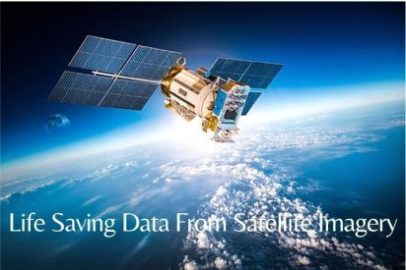Two billion people are cut off from any power grid. They live with makeshift generators or without electricity at all. This is a massive challenge, especially for health care in times of a global pandemic: 600 million people are supplied by health centers that do not have the electricity they need to charge electronic medical devices, establish an Internet connection for communication and information, or cool them for storage of drugs and vaccines to operate.
Markets With Little Data Inhibit Investment
It is precisely developing countries that are affected by this lack of infrastructure. Development organizations, NGOs and companies, have been trying to fix this problem for years, but with moderate success. There is no shortage of ideas – there is a lack of reliable data. Investments cannot be adequately planned, and the effects of aid projects in rural villages cannot be measured because data is incomplete, non-existent, or out of date.
In stark contrast to data-saturated economies, there is not enough reliable real-time decision-making information in developing countries to make meaningful investments. In data-poor markets, governments often do not know where villages are, how many people live there, where their electricity grid extends, where health centers are located, and where most people need functioning health centers. You cannot plan optimal investments in rural health infrastructure based on the needs of the villages. So billions are wasted without improving people’s lives.
Also Read : E Privacy – Impact On The Digital Scene
Satellites As A Data Source
At the moment, anyone who wants to know the location of villages, the size of the population, or the density of supply has to travel there in person. A lot of effort is required to collect data that can be used. This is still possible in the scope of small aid projects – but no one can personally interview two billion people.
Projects such as “Village Data Analytics,” or VIDA for short, collect satellite data from closing the information gaps. AI-based algorithms analyze satellite images and on-site data to identify supply gaps, complete maps and show the fastest routes. This allows planners and electrification companies to invest in the electrification of health centers.
Governments, companies, and investors can find out where they can strategically and effectively start to help as many people as possible. A concrete example is the “VIDA vs. COVID” project, which detects health centers without access to the power grid and calculates vital figures such as travel time, population served, service level, and access to the infrastructure. The results are presented on an interactive, intelligent map in a large area of interest selected by the customer.
Machine Learning And Local Validation
Machine learning and thus self-optimizing algorithms are used to obtain reliable data from satellite images. For example, they evaluate night-light satellite images from NASA and use a prediction model to determine whether the health center is connected to the national power grid for the shortest route. Another algorithm identifies the extent and the characteristics of the settlements near the health facilities with the help of satellite images in daylight, which come from the Sentinel-2 sensor of the ESA. The software extracts characteristics such as the size and density of settlements, road access, and agricultural use.
Satellite images that have been recorded for years or decades can be used for time-series analyses. In this way, the history of each settlement can be traced, and predictive modeling can be carried out: How much will a village grow in the next few years? How much will its economic performance change? These questions can be modeled with the data obtained.
However, the results do not come from the calculations of the algorithms alone. On-site surveys and data collection and data streams from IoT devices already used in existing mini-networks (smart meters) are used for validation. These data often come from the governments and companies themselves. The World Bank also provides data sets that are required for granular data analysis.
Success Factors: Experience And Technology
The success of “VIDA vs. COVID” is to improve access to functioning health care for the rural population in the countries of sub-Saharan Africa, thereby increasing the resilience of these countries to the COVID pandemic and other health risks. Currently, up to 80 percent of rural health facilities are not electrified. Due to its strategic nature, it can help hundreds of millions of people to gain access to electricity and health care.
However, technology alone cannot deliver the necessary success. A team of experts is essential in every application, but working in developing countries requires a unique combination of local experience, market knowledge, and technical expertise. Maintaining a team on-site is essential: it is only on-site that it becomes clear which parameters are crucial, and the solutions found can only be applied and tested on-site.
The Digital Backbone
In concrete terms, such projects help, for example, with the electrification of entire regions. This is the critical and essential prerequisite for the next step: digitization. People and markets that are cut off from the power grid have no access to the globalized digital market and fall behind others.
Another important application is the optimal placement of infrastructure such as radio towers. When building schools or hospitals, it is also easier to determine possible locations to reach as many people as possible. In addition, the data also gives retailers a particular source of information in which areas, which have so far been insufficiently mapped, can offer products such as solar systems, water pumps, or agricultural equipment.
In the information society, location is increasingly becoming a secondary factor. Digitization offers the opportunity to serve the global market with solutions and services and promote the local market with digitized services efficiently. This creates a digital backbone for areas that were previously closed to digitization. This achievement is vital in the long term and offers a huge opportunity for developing countries.
Also Read: New Technologies Are Turning The Supply Chain Upside Down


